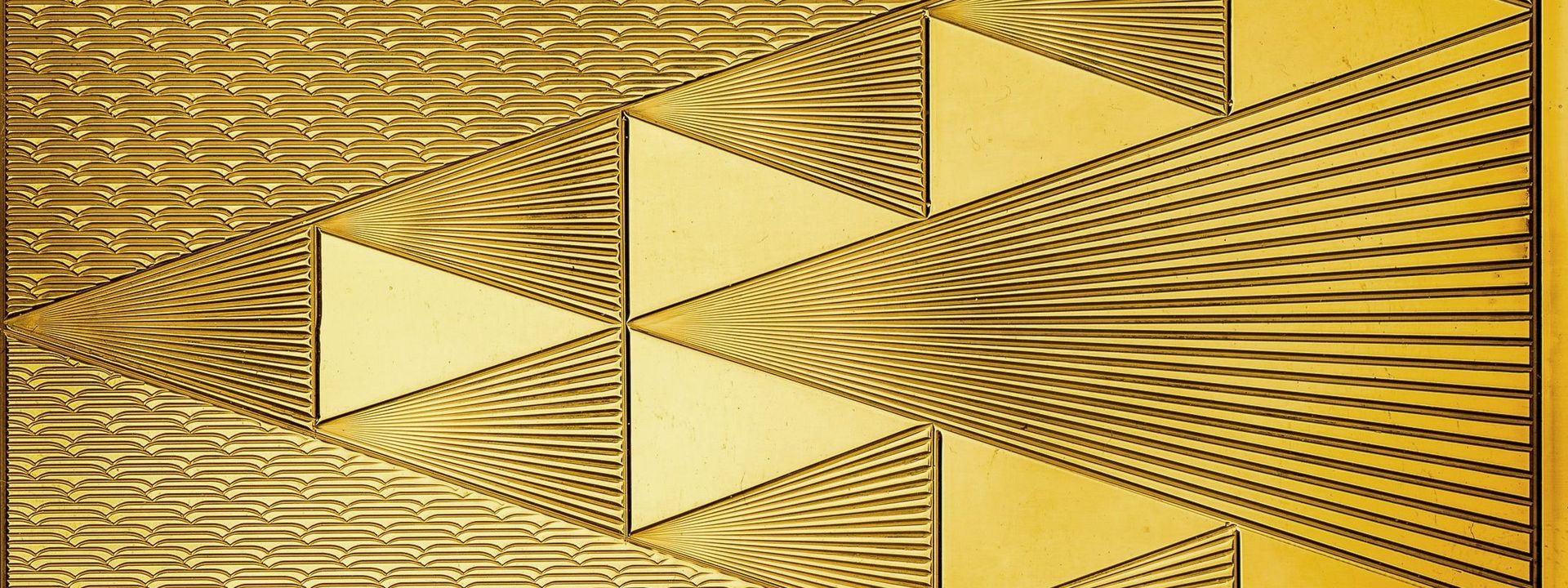Artisanal Techniques and the Steps in the Jewelry-Making Process
Nearly everyone has a piece of jewelry: a ring, a chain with a pendant, or a piercing. But jewelry did not become an accessory available to the masses until jewelry manufacture developed in the mid-18th century. Techniques that had previously all belonged to the goldsmith trade now became the province of individual skilled craftsmen. Thanks to specialization and the increasing use of machines, workshops could produce jewelry very efficiently. As opposed to the classic art of the goldsmith, about 50 different professions were now involved in making just one piece of jewelry. The Jewelry Manufacture exhibition at the Deutsches Technikmuseum provides a window into this world of artisanal mass production and the production steps it involves.
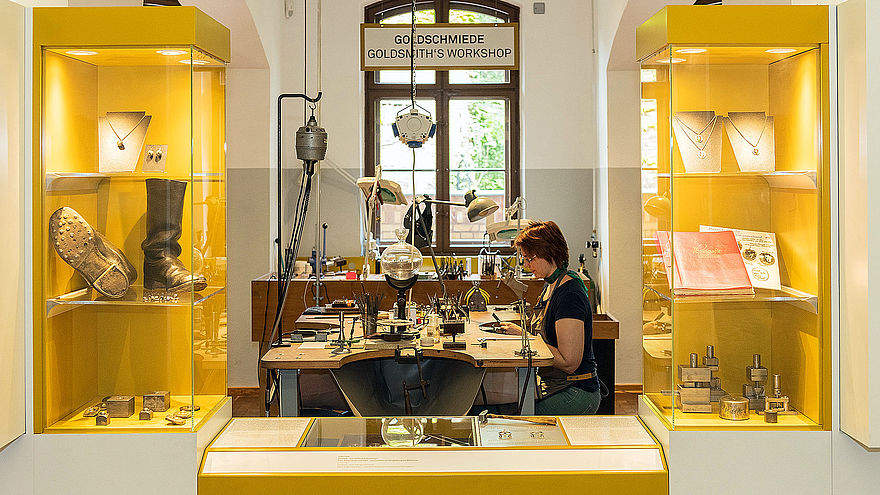
SDTB / C. Kirchner
Making a Piece of Jewelry: Historic Machines at Work
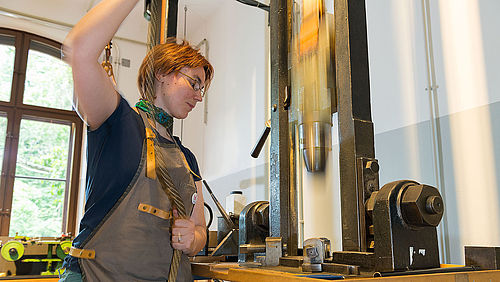
SDTB / C. Kirchner
Six techniques in the production of jewelry are at the heart of the exhibition: embossing/pressing/punching, drawing/rolling, casting, goldsmithing, guilloché/engraving, and chain making. Visitors can follow along step by step as a piece of jewelry is made. Historical machines are used – some hand- or foot-operated, others electrical – such as the friction screw press for heavy embossing, or the centrifugal casting machine for casting various jewelry parts. Quite impressive is the drop hammer, which stamps metal with a seven-ton blow. In two hours of piecework, using this machine a jeweler raised the combined weight of a steam locomotive like the Prussian P 8 on display in Engine Shed I.
Machines have been used to make chains for nearly 200 years. Regular demonstrations show the chain machine in action.
SDTB / C. Kirchner
Guilloché is a technique for engraving line patterns into metal surfaces. Demonstrations of this mechanical engraving technique regularly take place in the Deutsches Technikmuseum.
SDTB / C. Kirchner
Using rolling machines and wire drawing machines, metal wires, tubes, and strips can be turned into jewelry like bracelets, rings, and earrings.
SDTB / J. F. Müller
Polishing is the last step. It can be done using a hand-operated machine, or by an automated polishing process.
SDTB / J. F. Müller
Casting allows many pieces of jewelry to be made at once. Liquid tin is loaded into a casting machine. It then spins rapidly, pressing the tin into a silicone mold by centrifugal force.
SDTB / C. Kirchner
The drop hammer is used to stamp jewelry parts. An embossed relief is pulled up by a rope and falls on its negative counterpart with the force of seven metric tons.
SDTB / C. Kirchner
Jewelry Manufacture in Pforzheim
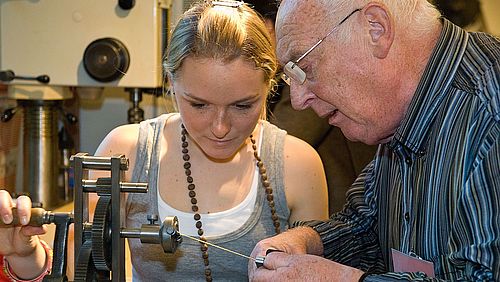
SDTB / C. Kirchner
The exhibition also includes media stations featuring documentary films about the rich tradition of jewelry manufacturing in Pforzheim. One focuses on the history of Fabergé eggs, which were produced in Pforzheim from 1989 to 2009.
The Deutsches Technikmuseum’s Jewelry Manufacture exhibit invites visitors to see and to touch the history of craftsmanship, manufacturing, and business in Germany. Indeed, historical techniques and artisanal know-how are not only preserved and documented. Experts also pass on their practical knowledge in seminars for students and practitioners of jewelry design and goldsmithing. These seminars form part of the Deutsches Technikmuseum’s participation in an umbrella project entitled “Manufactory Production and Design of Jewelry.” In 2015, the German Commission for UNESCO placed this project on Germany’s List of Intangible Cultural Heritage as an example of a “good safeguarding practice.”
Scholarship Pforzheim revisited – Berlin
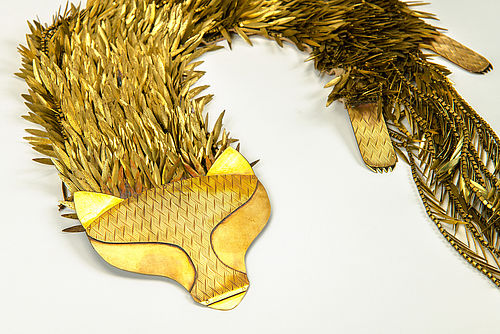
SDTB / C. Kirchner
The scholarship will celebrate its tenth anniversary in 2021. Since 2011, 19 graduates of the jewelry studies at Pforzheim University have developed modern designs with historic machines in the exhibition workshop "Manufakturelle Schmuckproduktion".
The Artist in Residence Scholarship is a cooperation of the Stiftung Deutsches Technikmuseum Berlin and the Gold- und Silberscheideanstalt C. Hafner. On the occasion of the 10th anniversary of the jewelry scholarship, the Deutsches Technikmuseum was showing selected works in cooperation with Galerie Noon from 19 until 21 November.
More information about the 10th anniversary of the Jewelry Scholarship

